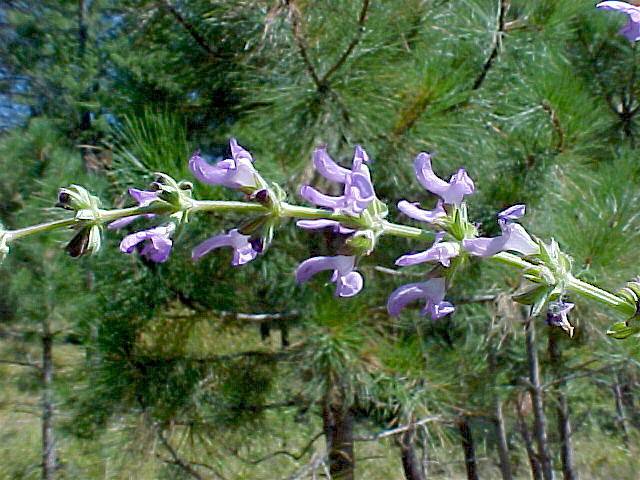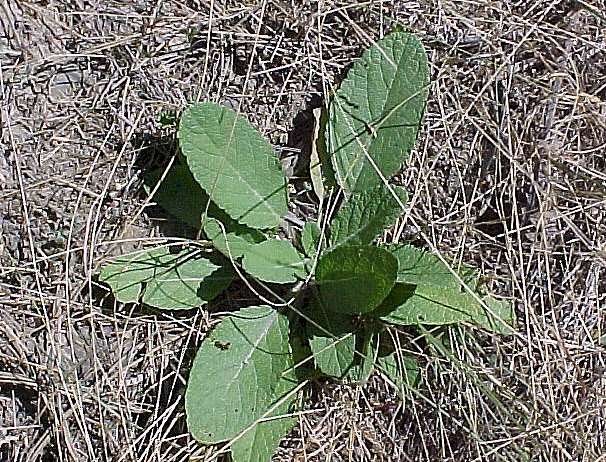Distribution: Scattered locations on both sides of the Cascades in Washington; escaping in parts of western, central, and eastern North America.
Habitat: Roadsides and other disturbed habitats.
Flowers: June-August
Origin: Introduced from Europe
Growth Duration: Perennial
Conservation Status: Not of concern
Pollination: Bees, flies, hummingbirds
Coarse, spreading-hairy perennial, the stem 4-12 dm. tall, freely-branched; many of the hairs gland-tipped.
Leaves opposite, the lowermost long-petiolate, wrinkled, ovate to ovate-oblong, toothed or doubly toothed, the blade 7-20 cm. long; cauline leaves reduced upward and with shorter petioles, often few.
Branches with scattered verticels of flowers subtended by bracts 5-11 mm. long with a tail, often dry and purplish; calyx glandular and hairy, the upper lip with minute, crowded teeth; corolla bilabiate, blue or white, often marked with yellow, 1.5-3 cm. long, the upper lip arched, somewhat hooded, longer than the tube and 3-lobed lower lip; stamens 2, ascending under the upper lip, exerted.
Nutlets 4
Publication: Sp. Pl. 1: 25. 1753.
PNW Herbaria: Specimen records of Salvia pratensis in the Consortium of Pacific Northwest Herbaria database
WA Flora Checklist: Salvia pratensis checklist entry
OregonFlora: Salvia pratensis information
E-Flora BC: Salvia pratensis atlas page
CalPhotos: Salvia pratensis photos





